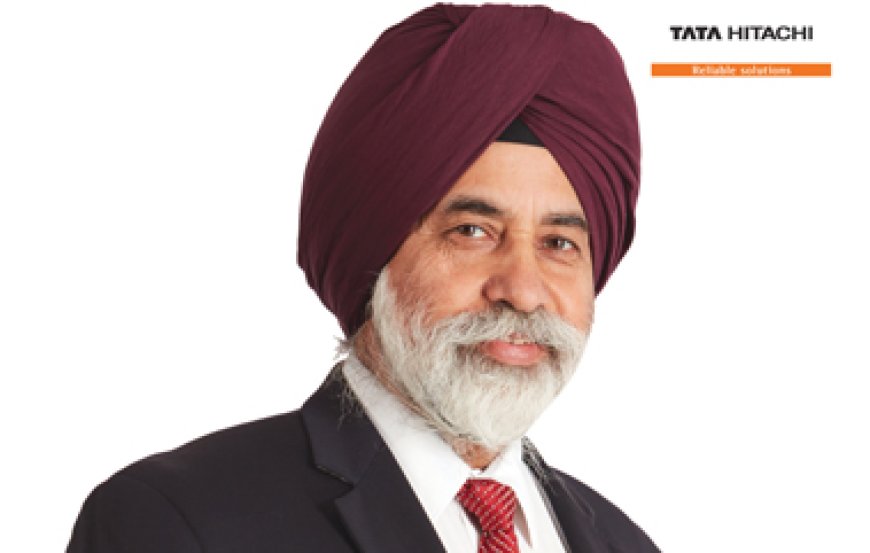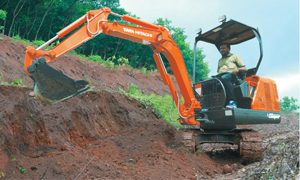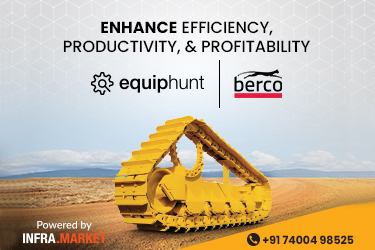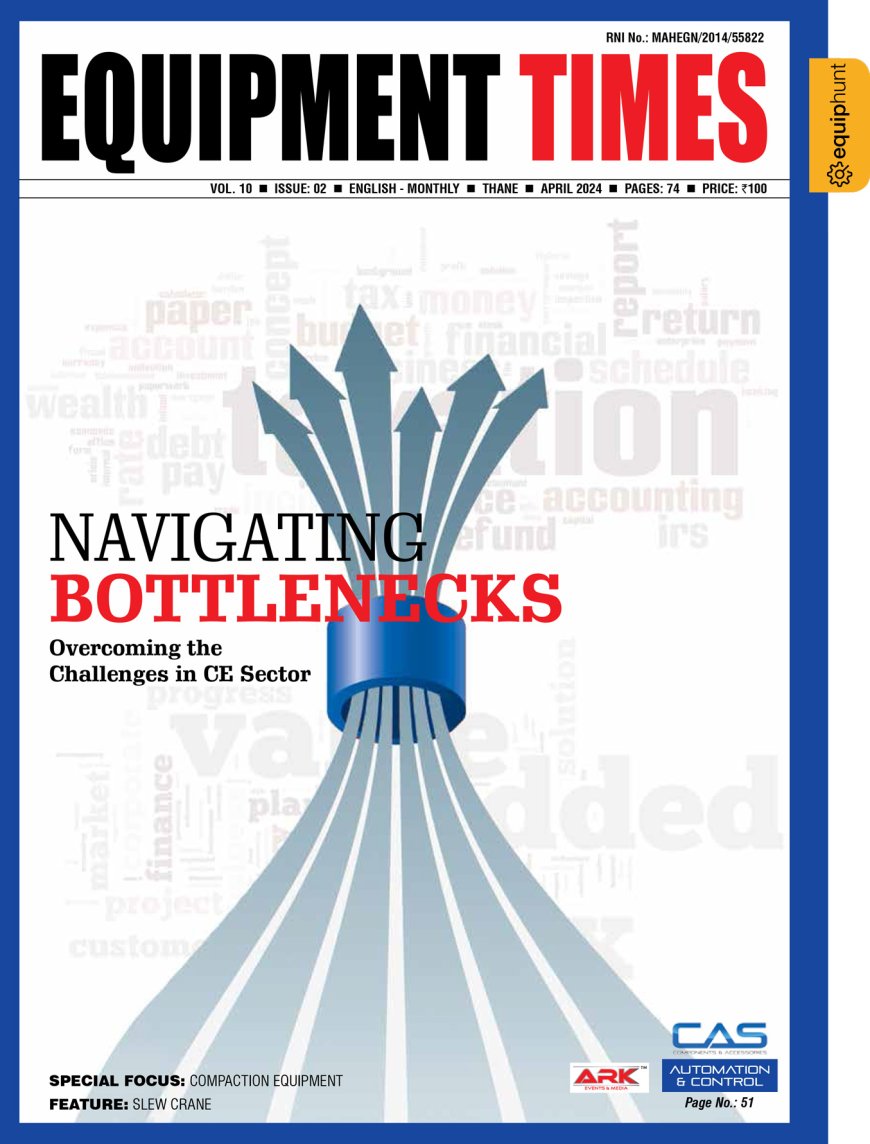Our range of mini excavator has high operational speeds & offer superior fuel economy.
Sandeep Singh, Managing Director, Tata Hitachi. Sales in rental market constituted nearly 75 per cent in 2018 and will continue to have a dominant share of demand. Almost two decades back, Tata Hitachi introduced the first 2T mini excavator

 Sandeep Singh,
Sandeep Singh,
Managing Director,
Tata Hitachi.
Sales in rental market constituted nearly 75 per cent in 2018 and will continue to have a dominant share of demand.
Almost two decades back, Tata Hitachi introduced the first 2T mini excavator – TMX20 Super, the first to be indigenously developed in India. Apart from this Tata Hitachi offers two models with zero tail swing – Tata-Hitachi ZX33U and Hitachi ZX20U. Our mini excavator range focuses on performance, comfort and simplified maintenance, states Sandeep Singh, Managing Director, Tata Hitachi. Excerpts from the interview
What makes a mini / compact excavator more useful or preferable?
Mini excavators are specialized machines which are designed to be compact and versatile. Apart from the features of 360o revolution as any other excavator, Tata Hitachi’s mini excavators offer boom swing that helps in digging and loading in places where full swing is not possible as when working alongside a wall. The compact frame of the machines is also enhanced by the zero tail which enables the operator to only focus on the front side operations when in compact areas. Transportability is also extremely important to make this machine reach remote sites. For example, the Tata Hitachi ZX20U can be fitted easily on a Tata Ace (extended body) or an Ashok Leyland dost, whereas the ZX33U fits the Mahindra Nissan Load King.

What are the unique features of your range of mini / compact excavators?
Tata Hitachi’s ZX20U in the 2T segment and the ZX33U in the 3T segment focus on performance, comfort and simplified maintenance. The machines have high operational speeds and offer superior fuel economy. The operator’s station has been detailed with ergonomic controls and work area design. Apart from a robust design with a zero tail and boom swing these machines come with full sheet covers for greater durability. These covers open wide to allow easy maintenance of the machine. Special care has been taken to include radial air filters and air pre-cleaner where possible to take care of Indian site conditions.
What have been the trends in using various attachments with mini / compact excavators?
Compact excavators attempt to do work being done by manpower more efficiently. So far, the usage of compact excavators has been in agricultural, real estate, municipal and industrial applications.
At present in India, even as the penetration of compact excavators is at a nascent stage, usage of attachments too is at a rather low level. So far rock breakers and augers are the most popular attachments, but we feel with increasing popularity of compact excavators, changing work demographics at job sites, higher requirement of productivity, more and more attachments will come into use with compact excavators.
Could you throw some light on the rental scenario of mini / compact excavators?
Most of the machines being sold in Kerala, some parts of Karnataka and Tamil Nadu are being used in rental for varied applications like agriculture, urban development, and general construction purposes. The sales in the rest of the country are still mostly user owned, given the availability of low-cost labour.
We have been monitoring the market outside Kerala for the last several years and have targeted areas that have higher labour rates as well as paucity of labour to develop the rental market. However as explained above, lower cost of human labour and no regulatory requirement – especially in towns and cities – still poses a major challenge in developing the rental market.
What is the financing market looks like, especially for mini / compact excavators?
There is no difference in the financing of mini excavators as compared to the rest of construction equipment. Clearly, it is much easier for customers to get the machines funded in areas where the rental market is developing. In other areas, as customers take it for niche applications and mostly for self-use, they go through the project appraisal method with either NBFCs or banks.
Do you think the rising popularity of mini excavators may adversely impact the backhoe / skid steer market?
In India, the backhoe loader was introduced very early and this has culturally been accepted as the entry level equipment in the construction industry given its ease of use and mobility. Skid steers are still a very niche market primarily used in industrial, real estate and road construction as utility machines. Hence a change from backhoe loader to mini excavator will happen, but slowly.
The change could be faster if there is paucity and higher labour costs in parts of the country / opening of niche applications. Regulatory requirement to use compact machines in an urban environment will further give impetus to adoption of mini excavators.
What is the current market size for mini / compact excavators, and which tonnage / hp are more in demand?
The current market size is a little more than 1000 units and is expected to grow faster than the general market at around 20% given its low base. This growth will be mainly driven by Kerala which is still the biggest market. Growth will also come from government agencies in the rest of the country, as they try to modernise given the Swachh Bharat objectives.
Mini excavators are used for a variety of applications from urban development to agriculture. Clearly the main reason why these are used is due to space constraint, where a normal excavator or a backhoe loader cannot operate and for work that requires greater efficiency and speed. The 3T excavator has a higher demand as compared to the 2T version.
What is your take on the recent budget?
The government has tried to address the issues in three areas in the budget that impact the construction industry: Continued focus on investment in Capex and laid the broad roadmap of investment in infrastructure particularly railways; announced the start of PMGSY III, roadmap for Bharat Mala. The budget looked at addressing the issues related to the crisis in the NBFC market by additional liquidity measures as well as the selective guarantee for bought out assets by banks. It has also looked at deepening the bond market and increased borrowing from overseas without crowding out the local market for private investors. Overall the intent of the government is to build on the successes of the last term to take Indian infrastructure to the next level.
Hits: 210














